This post may contain affiliate links.
Can you grow pumkins in the tropics? Yes you can grow pumpkins in the tropics and they grow very well indeed. Pumpkins are possibly the easiest vegetable to grow in a tropical climate and they produce a huge weight of food. You need to choose the right variety of pumkin and know a few tricks to grow abundant pumpkins.
When I first started our tropical fruit and veg garden I wasn’t sure if you could grow pumpkins or not. Being from the northern, temperate, hemisphere, I associated pumpkins with the autumn harvest, Thanksgiving, winter storage, and spring plantings. I decided to just plant some seeds and see what happened.

Most certainly, yes, you can grow pumpkins in the tropics and this post is about experiences, tips, and must-know facts, about growing pumpkins in a tropical climate.
We also give you a photo comparing male and female pumpkin flowers. It’s essential that you know the difference in structure between male pumpkin flowers, and female pumpkin flowers for a successful pumpkin harvest.
Growing Pumpkins in The Tropics
Yes you can grow pumpkins in the tropics. They will grow year-round and pumpkin seeds can be started at any time of year, although the best time to sow seeds is reportedly February to November, outside the worst of the summer wet season. This hasn’t been our experience, we’ve been able to start pumpkins at any time of year and they’ve done well.
A few words of wisdom, born of trial and error, successes and failures, growing pumpkins in the tropics.
Growing Pumpkins From Supermarket Pumpkins
This is one of my favourite tricks for gardening on a tight budget in the tropics – grow plants from your supermarket-bought food. I do this all the time and it’s absolutely worth just having a go. Sure, some things fail, but that’s part of the learning process. Just try, you don’t know until you try.
Yes, you can grow pumpkins from the seeds in supermarket or store-bought pumpkins. In fact, all of my pumpkins started that way. Every time we eat a pumpkin, be it shop-bought or homegrown, the seeds go back in the ground. We don’t even care what time of year it is. They usually grow, some more successfully than others.
Most members of the pumpkin family can cross-pollinate and hybridise, so there’s a chance your pumpkins may not look exactly the same as the pumpkin you ate. If it tastes bitter don’t eat it, there are various stories of pumpkin hybrids being bitter or even toxic, but tasting bad would be a clear sign.
If you’re worried about this just spend a dollar or so on a pack of pumpkin seeds. You can get seeds from online stores, delivered straight to your door.
Varieties of Pumpkins For The Tropics.
The majority of pumpkins in the supermarket in our area are Japanese pumpkins and these are easy and productive in your tropical veggie garden.
Varieties of pumpkins for the tropics include:
- Jarrhadale
- Queensland Blue
- Jack be Little
- Japanese
- Butternut
- Buttercup
- Musquee de Provence
Some of the “winter” pumpkins aren’t suitable for the tropics, but pumpkins are usually called “winter squash” because they can be stored to use in winter, not because they grow in winter in cooler climates.
Companion Plants For Pumpkin Plants
Legumes such as beans and vegetables like corn are the usual recommendations for companion plants to be grown with all types of pumpkin plant.
Don’t worry about companion planting too much, it really doesn’t make much difference. Its nice to plant a variety of plants rather than a monocilture, this will help keep pest numbers down.
Male and Female Pumpkin Flowers

When your young pumpkin plants first start producing flowers, they’ll likely all be male. Pumpkin plants produce a lot more male flowers than female flowers. A week or two later, you’ll likely see your first female flowers, This also applies to cucumbers, courgettes, zucchini, any type of squash in this family.
If you have plenty of bees around and multiple pumpkin plants, all flowering, you’ll likely find your pumpkins become pollinated naturally, but I like to make sure those precious female flowers result in a pumpkin we can eat, so I hand pollinate pumpkin flowers.
Hand Pollinating Pumpkin Flowers

Pollen reportedly works best when it’s cool. Also, your flowers are more likely to be fully open at dawn. So every morning, when you do your early morning garden inspection, coffee in hand, check for female pumpkin flowers. If you spot one, take action.
You need to get the pollen from a male flower, ideally on another plant. I don’t know if it’s possible to use a flower from the same plant, but it’s never worked for me. We always make sure we have three or more pumpkin plants to give us plenty of flowers of both genders.
To transfer the pollen to the female flower you can use a child’s paintbrush, a cotton bud (please choose bamboo stick buds, not plastic), or you can just break off the male flower, remove its petals and touch it to the female flower.
If pollination has been successful the ovary (containing the ovule and destined to become the fruit) at the base of the female flower will swell quickly. If the female flower isn’t pollinated this ovary, the potential baby pumpkin will wither and die.
Protecting Your Baby Pumpkins in Tropical Conditions
Maximise your chances of harvesting a healthy pumpkin by giving your pumpkin babies a little love. Ideally, the pumpkin plant’s leaves will shade the fruit, they won’t like to be in the full tropical sun.
If the leaves aren’t shading them you could maybe set something up with palm fronds or whatever you have handy.
Just as your pumpkins don’t like sitting in the sun, they don’t like sitting in a puddle. Try to lift them off the ground and keep their under-sides as dry as possible.
This will help stop rotting and deter pumpkin-eating bugs. I just shove a couple of handfuls of dry hay or sugar cane mulch under each fruit to lift it and let the air circulate a bit.
Chickens will peck at pumpkins, yes, and eat ripe pumpkins and seeds, however, our chickens to not eat pumpkin vines and leaves, they’ve always left them alone, so pumpkin vines and plants don’t need as much chicken proofing as other parts of the garden. Chickens will scratch up new plantings and seedlings, so chicken protection for a new pumpkin patch may be a good idea.
Baby Pumpkin Leaves

Do you have unidentified seedlings growing in your garden beds? If you added pumpkin scraps to your compost and your compost didn’t get super hot, they’re very likely to be pumpkins.
Pumpkins grow so easily from seed and are so hard to kill in compost, that they’ll pop up everywhere. If you’re trying to identify mystery seedlings and think you may be seeing baby pumpkin leaves, check our photo above to identify them.
As you can see above, yes, I have germinated pumpkin seeds, from store-bought pumpkins, in an egg box or carton. I then transplanted them to a garden bed. Yes you can do this, pumpkins transplant OK. However, this isn’t recommended.
I think it’s much easier just to push the pumpkin seeds into the ground where you plan to grow one. Remember that pumpkin plants sprawl over a huge area. Things could get messy.
One of the main reasons people in colder climates do most of their germinating in pots and seed trays is to get a head start on spring weather. We don’t need to do this so much in a tropical climate.
Conditions For Growing Pumpkins in the Tropics
If you have soil of any kind, with shade, full sun or part shade, try growing pumpkins, they might just work!
Be careful not to grow anything near CCA treated wood or any soil contaminated with, for instance, lead from old lead paint or fuels. You don’t want to eat that.
I mostly grow my pumpkins in a spot that gets some shade. “Full sun” in the tropics is pretty scary for most plants.
Just about any plant likes fertile, rich, well-draining soil. So don’t grow them in dust or in a swamp. A bit of a raised mound should stop your crops getting too waterlogged in the wet season.
Try not to dig and never leave your soil bare. Add nutrients from home-made compost or rotted manure, from the top, mulch well, and either keep the soil moist or water deeply. Don’t superficially surface water.
Encourage all those good soil bacteria and plant other plants nearby to support each other. Soil is a mysterious thing. All of your gardening revolves around building the best soil possible. But rule #1, never leave your soil uncovered, is probably the most vital.
Pumpkins in Raised Beds
Can you grow pumpkins in a raised bed? Yes, of course you can. But what if you don’t want them to spread and sprawl?
I have pumpkins in a raised bed, I just keep tucking the fronds back in, or cutting off any branches I don’t want. They grow around and around the bed, putting down roots where the branches touch the soil. They’ve done great in that bed!
Mulching that bed using chop and drop, including pumpkin leaves and cut fronds, has done wonders for the soil in that bed.
Pumpkins in the Tropical Wet Season
Our pumpkin vines grow like crazy during the wet and keep on producing flowers. However, I’ve not once been able to fertilise a female flower during the wet season. I don’t know why this is, it could be the heat or wet affecting the polle, but the same applies for all members of this family. I’ll keep trying.
In the wet season pollinators may also be scarce.
The latest I’ve harvested pumpkins is December, the start of summer, after this fruit is very likely to rot or be attacked by pests. The other time we harvest a lot of pumpkins is autumn into early winter, about April into May and June.
That said, we have pumpkins forming in June too (the dry season, winter), but by that time some of our vines have died back, others are flourishing. That’s when the pumpkins that formed on the tail-end of the wet should be done.
Honestly, most of our pumpkin plants come from seeds in our home-made compost, we never purposely sew pumpkins at a particular time of year, they just have their own little permaculture thing going on out there.
Pumpkins in the Dry Season
You will be doing a lot of watering to keep pumpkins alive or healthy through the worst of the dry, particularly towards the end of spring when heat and no rain make our gardening lives really difficult. I usually manage to keep mine alive to go crazy during the wet.
Mulch them well and make sure your soil has plenty of organic material that holds water well. Always water deeply, not superficially and try to never water a plant that’s in full sun.
You’re likely to see your pumpkin leaves wilt, this is usually just fine. A wilt can also be fatal if conditions are extremely dry and hot. You’ll learn to tell the difference between a natural wilt and a fatal one.
When to Harvest Your Pumpkins?

Depending on variety of course, you should notice when your pumpkins are “cured”.
We grow Japanese pumpkins, so they turn from green and white to a little bit orange in the white parts. Other than that, if the vine starts to shrivel and brown, your pumpkins should be ripe. Here in the tropics of Australia we know when to harvest pumpkins by just checking for ripeness and the browning or shrivelling of the stalk. We can harvest pumpkins almost year-round, but your location and microclimate will determine when you can harvest pumpkins.
The pumpkins in the photo above, taken in May, are just right and these will keep months in a cool dry place.
How Many Pumpkins Per Plant?
You should be able to produce multiple pumpkins per pumpkin plant. However, the number will vary according to several factors.
How long is your growing season? For us, in the tropics, pumpkin plants grow year-round and I have pumpkin plants over a year old that keep producing.
Have you pruned or cut your pumpkin vines in any way? This could affect the number of pumpkins each plant produces.
Are your pumpkins in good, rich soil, with plenty of water? These factors will affect the size of your pumpkins as well as the number of fruits. You should fertilise your pumpkins during the growing season and make sure they receive adequate water, this will increase the number and size of pumpkins you can harvest.
A well-balanced fertiliser is good for pumpkins, too much Nitrogen will encourage green leafy growth, phosphorous encourages fruiting.
The variety of pumpkins you grow will also be a factor, pumpkins come in many shapes and sizes.
You should be able to produce 2-3 pumpkins per pumpkin plant. However, it’s not unusual to produce more, plants can sprawl over huge areas if left to do this and with rich soil.
Poor pollination may decrease your pumpkin yield. This is why we hand-pollinate every female pumpkin flower we see.
You may lose pumpkins to rot in the wet season, decreasing your yield per plant.
Storing Pumpkins
If you have more pumpkins than you can eat, well done! Also, this is quite likely, pumpkin plants produce a lot of food.
Pumpkins are one of the best-storing foods out there, they’ll keep a long time, just keep them as cool and dry as you can. Make sure you don’t leave them out in the wet season rain sitting on soggy ground, they don’t like that.
Pumpkins are called winter squash in the US (to distinguish them from summer squash) because they can be stored through winter and consumed in winter. Summer squash need to be eaten fresh from the garden unless you preserve them in some way.
What To Do With Your Pumpkins?
- Pumpkins are great in soups
- You can freeze pumpkin
- Feed it to your livestock
- Roast it and cool it to make pumpkin salads
- Pumpkin can be used in sweet and savoury dishes
- Pumpkin jam is a thing!
- I haven’t tried dehydrating pumpkin yet, but I may.
So have fun growing pumpkins. We use them in soup, roast them, mash them, add them to just about anything. If you grow them in rich soil they will be nutrient-dense and add sweetness to any dish. My tropical garden is my laboratory (did you know I used to be a scientist?). Right now I’m experimenting with various types of pumpkin, different levels of shade and some exciting home made fertilisers and soil bacteria cultures. I never buy shop-bought synthetic fertilisers, they’re bad news for your microbes. I’ll let you know how we go!
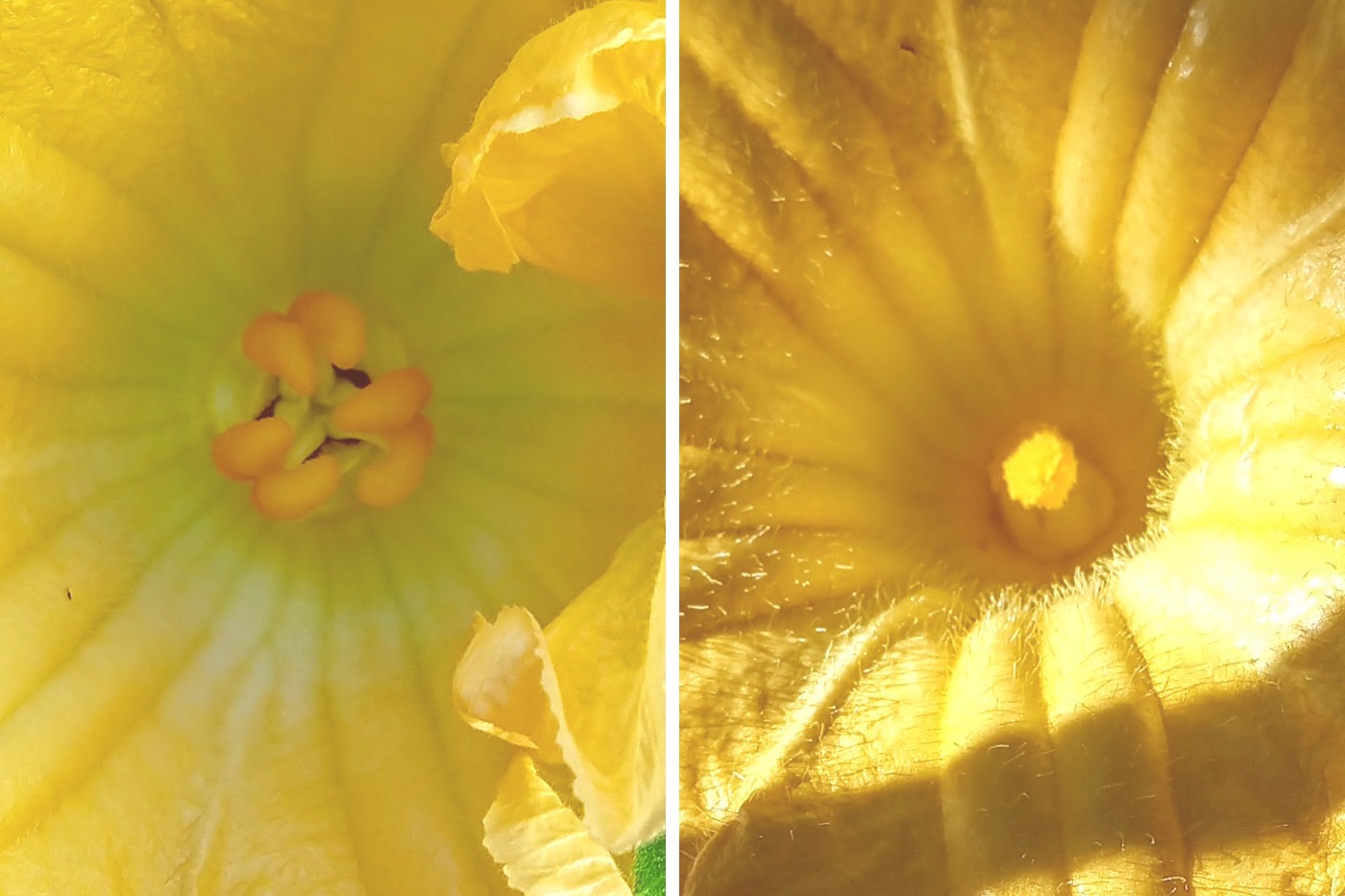
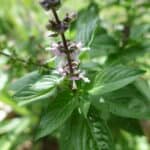
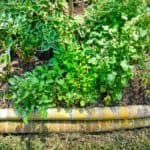
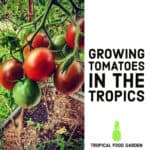
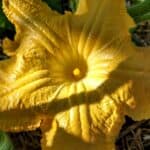
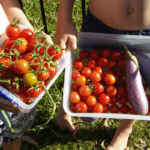



Thanks! We discovered a large “volunteer” West Indian Pumpkin in the tall grass of our new house in Puerto Rico. We divided it up with the neighbors and planted the seeds in a new area today; so we’ll see how it goes!
Thanks for your comment! Best of luck.
I live in Naples Florida and I am growing Seminal pumpkins. I started them from seed. 5 . They are growing very well. I have harvested 5 pumpkins so far. I did not know how long the plant lives so thank you for letting me know they can live a year.
They can live for several years if you don’t have a cold winter. Good luck with the Seminoles!